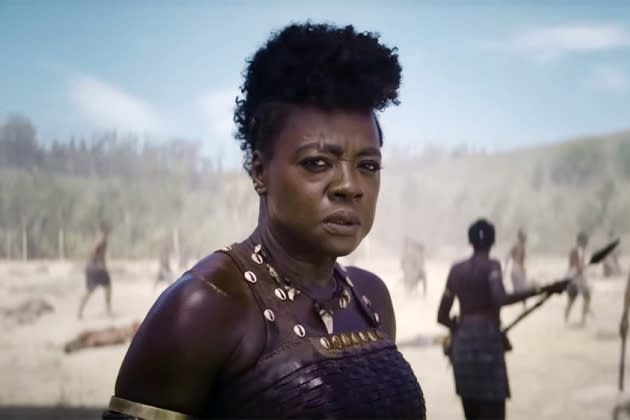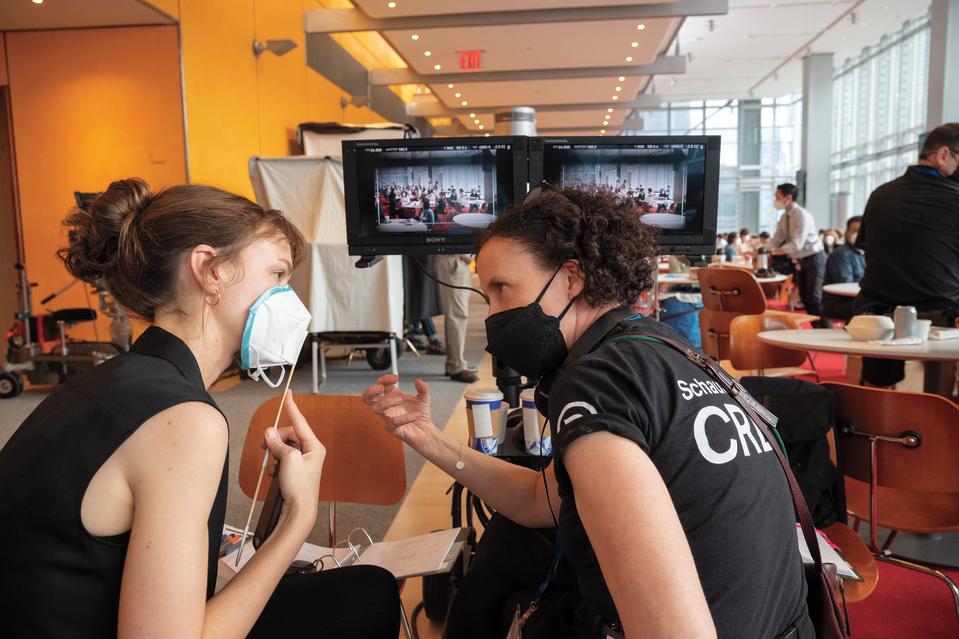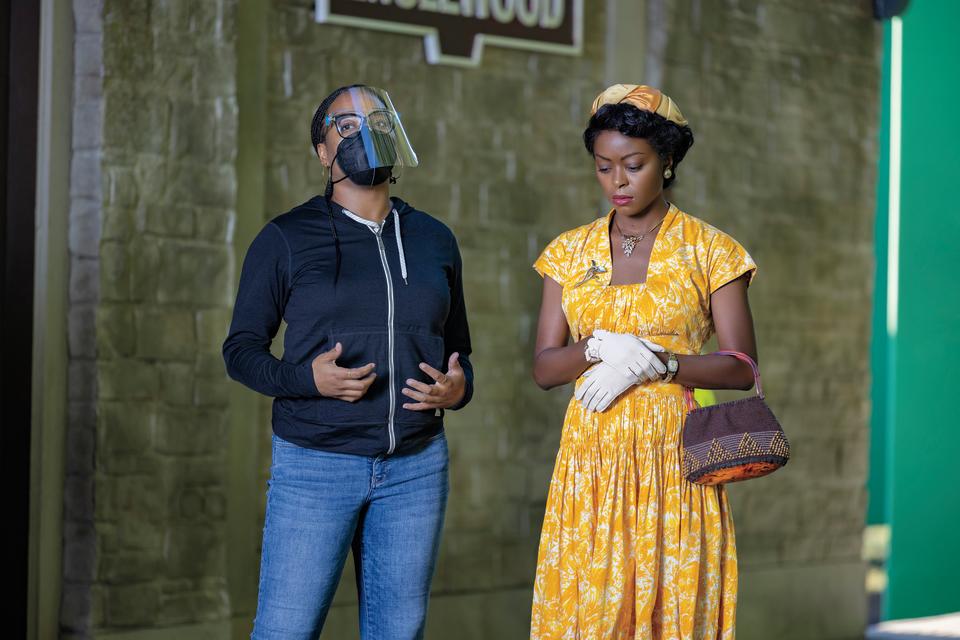Directors of ‘Woman King,‘ ‘She Said’ and More Detail How Gender, Personal Experiences Impacted Storytelling
- Oops!Something went wrong.Please try again later.

Setting out with an assignment to interview five women directors who are also awards season contenders meant beginning with emails to everyone’s publicists. The very first response came with a bite: “Why just ‘female’ directors? She’s just a filmmaker.”
And then there were four.
More from Variety
Film and TV Charity Launches Behind The Scenes Week - Global Bulletin
Harvey Weinstein, Convicted Rapist, Gloats Over 'She Said' Fizzling at Box Office
'She Said' Bombs: Why Aren't Awards Season Movies Resonating With Audiences?
Indeed, why aren’t they filmmakers first and foremost? It was a question to ponder throughout screenings and interview prep. In the same vein as the colorblind teachings of the ’80s and ’90s, which are now widely criticized for not taking a full-person experience into account, it seems that stripping the gender from these filmmakers also detracts from their art.
Gender (and race and so many other factors) certainly shape everyone in ways large and small, regardless of where one falls on the spectrum. The experiences of these filmmakers speaks directly to why and how they create art; it’s no different than if the article was about men who also happened to direct. It’s a matter of acknowledging that filmmakers experience the world through a particular prism and no two rainbow refractions are ever the same.
“[Gender] affected why I even took the job in the first place,” says “I Wanna Dance With Somebody” director Kasi Lemmons of the upcoming biopic about Whitney Houston. “It’s part of the lens through which I view the world. It’s my identity.”
It’s a sentiment oft-echoed by all the directors, including Gina Prince-Bythewood, who brought “The Woman King” to life. “Talent has no gender so I start there, but absolutely my Black female lens is everything for this film: where I chose to put it, what I chose to highlight, how I approached the action, how I approached the world building [and] how I approached performances,” she says.
Prince-Bythewood’s film is set in the early 1800s and stars Viola Davis as leader of the Agojie, a unit of warriors who defended the African kingdom of Dahomey. Oh, is the gender important? They were an all-female warrior unit.
Davis, alongside her producer husband, Julius Tennon, producer Cathy Schulman and writer-producer Maria Bello, spent years working to get every element in line to bring their project to the big screen. In Prince-Bythewood’s pitch meeting with the producers, the accomplished and seasoned director found herself crying.
“[It] was a shock to me, but what this film has absolutely taught me is that there’s a power in vulnerability,” she says. “And it was the thing that connected Viola and I. The fact that she felt I was able to show vulnerability in such a moment [showed] she could trust me as a director.”
That moment became a bond; the human element so frequently obliterated on the business end of moviemaking became its foundation. “My mindset as a director is I should never ask an actor to do something I’m not willing to do, and I always apply that to [the physical stunts], but I had never actually connected it to the vulnerability part,” Prince-Bythewood says.
Directors, alongside camera operators, are the first audiences for their own projects. How can they hope to evoke emotion on one side of the camera if they can’t feel it on the other?

“She Said,” a film about the journalistic efforts behind the Harvey Weinstein sexual abuses story, was directed by Maria Schrader. “Yes, [I am] crying behind the monitor when I’m emotionally involved,” says the German helmer. “And that’s a good thing.”
The very subject matter resonates with her and so many others. The script’s unequivocal acknowledgment comes on screen in an exchange that posits if well-known actors are having these experiences and can’t speak up, then in what other industries is this happening, and who else is silenced?
“These journalists, Megan [Twohey, played by Carey Mulligan] and Jodi [Kantor, played by Zoe Kazan], had a very hard time distancing themselves from the subject matter. It’s kind of on the contrary to journalists like Bernstein and Woodward” who broke the Watergate scandal, says Schrader, who notes that the subject matter caused her to reframe some personal experiences too.
The project was already in development, though not yet at Universal, when Schrader was offered the directing job. “I could read between the lines of the script,” she says. “This was at its core about womanhood, about what it means to be a woman in this world.”

For Chinonye Chukwu, director of “Till,” coming onto the project meant not just reading between the lines, but also creating a scripted shift to focus on those spaces. “Till” follows Mamie Till-Mobley (Danielle Deadwyler), the mother whose courageous decision to show the world her murdered son’s abused body helped spur the civil rights movement.
Mamie, as many others, is an oft-overlooked Black woman erased from the pages of history. Chukwu says she had no problems “trimming the fat [in editing] that would take us away from [Mamie’s] perspective.”
“As a Black woman, she’s having to navigate all-male spaces, she’s having to navigate predominantly white spaces. She’s having to navigate it while people are projecting their own kind of racism and sexism onto her,” says Chukwu — elements to which she can also relate.
Lemmons, too, had a similar affinity with her subject, whom she’d met while working on scripts for Houston, as well as for the singer’s production company. Their similarities, too, “really cemented the connection,” says Lemmons. Both attended small private schools with very few Black students.
“I was for sure the only Black girl in my elementary school, and it caused me a lot of stress. Definitely those similarities came into play in how I viewed her life, and what I could bring to it in terms of my perspective.”
Lemmons was interested in exploring Houston’s experiences from all sides and not shying away from her complexities.
“[She was] touched by the divine [and] at the same time was very, very human and that kind of dichotomy is incredible,” Lemmons says.
She adds that Houston’s dignity was stripped away both by the paparazzi and through her own self-inflicted actions, and this was an opportunity to restore the singer’s humanity.
“It’s the gifts that I really want to celebrate over the frailty, however. The fact that they both exist together is fascinating and it’s something we can all relate to,” she says.
Regardless of the level of comfort with the subject matter, and no matter how much planning takes place during official pre-production (or in the years leading up to it), the actual process becomes the world’s most impressive improv stage, sometimes in the most unexpected of ways.
Locations must always be scrubbed clean for the actors and crew, even if the set decoration department is then tasked with going back in to dress them with sanitary, specially constructed trash.
A beach location shoot in “She Said” took Schrader by surprise when, upon arrival, she discovered the sand had been hygienically combed through with a machine to be sure no one would be startled by a wayward piece of glass or unsanitary discard. The crew, the actors and the extras were ready to go.
“It looked like the tennis court at Wimbledon instead of a remote beach somewhere in Caldwell,” she says. “It had traces of the machine as far as you could see … I thought the day was ruined.”
Instead, everyone came together to walk up and down the beach in unity. “Everyone with their coffee … all of these hundreds of people came and helped and were all walking the beach for two hours. And it was kind of nice.”
That’s one of the beautiful things about production encapsulated into a moment in time: so many people coming together to create something bigger than themselves.
And, later, when everything comes together on screen, it’s easy to overlook the very real, very imperative people who did their jobs so well that, indeed, it seems like magic. (This phenomenon allows a film such as 2012’s “Argo” to win the best picture Oscar while somehow erasing its director, Ben Affleck, from the narrative without a directorial nom.)
“It’s funny you say that,” PrinceBythewood says in response to this paradoxical way of thinking as she reflects on “The Woman King.” “There is an assumption that Viola Davis is just great because she is, and I was guilty of that in the beginning as well. There’s an assumption [that] these are extraordinary actors, but they’re extraordinary because they put in so much work.”
Prince-Bythewood realized as amazing as Davis is, that didn’t mean she wasn’t in need of a director. She brought her experience as an athlete, and as a human, to create this cinematic partnership. How easy it is to assume talent is innate and not a honed skill, no matter what the realm.
And make no mistake, Prince-Bythewood may have joined the project years after Davis and team originally conceived of it, but that doesn’t mean her contributions were any less.
One of her passions was adding the song and dance sequences to the film. “It was something that wasn’t in the original draft and came out of the research I did,” Prince-Bythewood says.
The addition meant the cast needed to learn another language for the singing in addition to the choreography. “I know that’s something I brought that maybe another director wouldn’t have done,” she adds.
Trust is the name of the game in production, for the creative as well as the technical. Schrader liked the idea of using a lot of single, uncut shots in the film because “to witness the accuracy of time without cuts has a different impact on the audience. It’s a real-time experience,” she says.
For the process, “You need a long time to rehearse, and you shoot maybe 10 times [for a short scene with] people coming in and out until it really works in one shot,” Schrader notes of the action, which she refers to as a “kind of choreography” in and of itself.
Creative choices can grow from multiple seeds, often with the same result. For “Till,” Mamie’s courthouse testimony is also a long, single take. “We did the scene in one shot because we didn’t have time for much else. After I called it for that shot and getting ready to move on, I recognized that,” Chukwu says.
She adds: “You create a plan, and then you’re open to changing everything.”
That’s not dissimilar to writing, either. There’s a plan, and then life happens. These four women are powerful storytellers who have found themselves at the table for awards season consideration not because of their gender, but because their experiences have made them deft artists striving to depict the reality of the human experience.
It may be that the question isn’t why these aren’t “just” filmmakers but why acknowledging their gender (and even their race) should in any way detract from their accomplishments.
Best of Variety
Sign up for Variety’s Newsletter. For the latest news, follow us on Facebook, Twitter, and Instagram.

